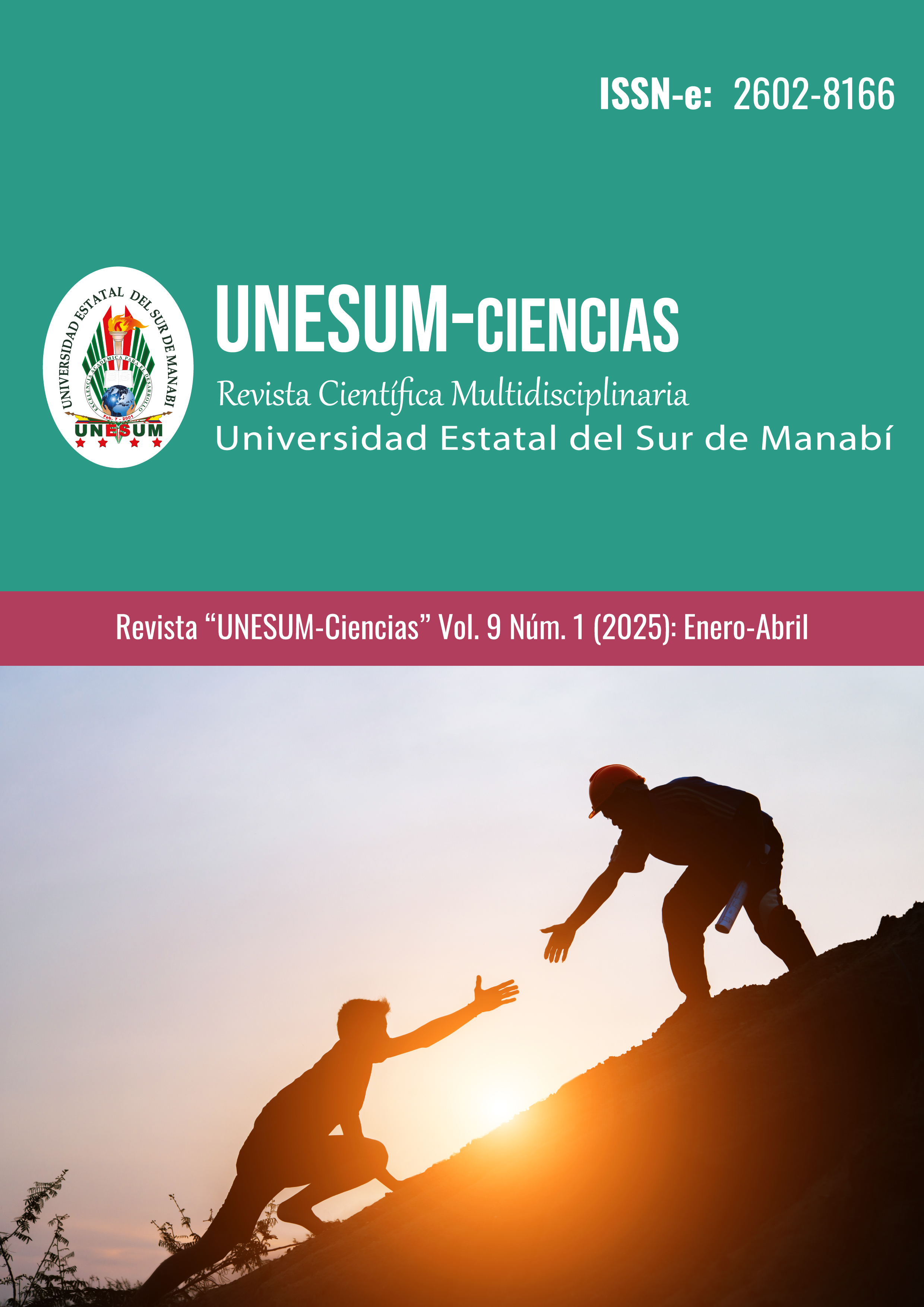FROM CLASSROOMS TO DIGITAL COMMUNICATION: THE IMPACT OF TECHNOLOGY ON THE PRODUCTION OF THE ENGLISH LANGUAGE
DOI:
https://doi.org/10.47230/unesum-ciencias.v9.n1.2025.129-140Keywords:
digital communication; educational technology; English production; language teachingAbstract
This study addresses the digital transformation in English teaching, considering the growing integration of technologies in education and their implications for the teaching-learning process. The objective was to analyze the impact of technological tools on English language production through a systematic literature review. The methodology was based on a qualitative documentary analysis of research published between 2019 and 2024, retrieved from academic databases such as Scopus, Web of Science, and Google Scholar. The results revealed three fundamental dimensions: digital platforms emerged as facilitators of knowledge access and collaboration; mobile applications transformed traditional methods through learning personalization and gamification; and Artificial Intelligence-based technologies showed potential to revolutionize teaching through immediate feedback and immersive environments. Significant challenges were identified, including the digital divide, the need for teacher training, and the importance of balancing playful elements with pedagogical objectives. The conclusions suggest that effective technology integration requires a balanced approach that considers both opportunities and limitations, emphasizing the need to develop comprehensive digital competencies in teachers and students.
Downloads
References
Álvarez, G. R., & López, M. G. (2024). La Inteligencia Artificial en la enseñanza del Inglés en nivel medio superior México. Gestión I+D, UCV, Gestión de Investigación y Desarrollo, 9(02), 54. http://saber.ucv.ve/ojs/index.php/rev_GID/article/view/28515
Arellano, C. M., Ardissone, G., & Mallo, A. (2024). La inteligencia artificial en la enseñanza del idioma inglés: desafíos y beneficios. Docentes Conectados, 7(13), 43-52. https://doi.org/https://revid.unsl.edu.ar/index.php/dc/article/view/294
Educación digital. (1 de Febrero de 2024). Integración de la tecnología en el aula de inglés. https://conocimientosweb.net/docencia/integracion-de-la-tecnologia-en-el-aula-de-ingles.html?utm_source=chatgpt.com
El País. (5 de septiembre de 2024). Así es la gamificación, la estrategia que revoluciona el aprendizaje y el desarrollo profesional. https://elpais.com/economia/formacion/2024-09-06/asi-es-la-gamificacion-la-estrategia-que-revoluciona-el-aprendizaje-y-el-desarrollo-profesional.html
Espinar, C. (2021). Aplicación de Moodle para fortalecer el proceso de enseñanza de inglés en la educación abierta. Revista Tecnológica Ciencia Y Educación Edwards Deming, 5(Enero - junio), 81-97. https://doi.org/https://doi.org/10.37957/.v5i1
Fray, J. I., Fray, L. F., & Fray, S. F. (2023). Aportes al desarrollo de habilidades cognitivas en la interacción didáctica de idiomas. Tecnologías. Bibliotecas. Anales de Investigación, 19(2), 1-11. https://doi.org/. https://dialnet.unirioja.es/servlet/articulo?codigo=8821111
Fuentes, A. R. (2024). Revisión sistemática sobre la Inteligencia Artificial para el aprendizaje del inglés L2. Porta Linguarum Revista Interuniversitaria De Didáctica De Las Lenguas Extranjeras, 91–107. https://doi.org/https://doi.org/10.30827/portalin.viXI.30221
Fuentes, A. R., & al, e. (s.f.).
Hidayati, T., & Diana, S. (2019). Students’ Motivation to Learn English Using Mobile Applications: The Case of Duolingo and Hello English. Journal of English Education and Linguistics Studies, 6(2), 189-213. https://doi.org/https://doi.org/10.30762/jeels.v6i2.1233
Luna, E. L., Vargas, I. M., Espinoza, P. E., & Cruz, Y. O. (2023). Las plataformas e-learning en el aprendizaje del inglés. Horizontes Revista de Investigación en Ciencias de la Educación, 7(27), 65. https://doi.org/https://doi.org/10.33996/revistahorizontes.v7i27.497
M?s?r, H., Koç, D. K., & Koç, S. E. (2018). An Analysis of Learner Autonomy and Autonomous Learning Practices in Massive Open. Arab World English, 4(Juluy), 24-39. https://doi.org/https://dx.doi.org/10.24093/awej/call4.3
Mogavi, R. H., Guo, B., Zhang, Y., Haq, E.-U., Hui, P., & Ma, X. (2022). When Gamification Spoils Your Learning: A Qualitative Case Study of Gamification Misuse in a Language-Learning App. arxiv(marzo). https://doi.org/https://doi.org/10.1145/3491140.3528274
Motteram, G. (2024). Improving teacher development through the effective use of social media groups. British Council.
Novelo, D. C., & Polanco, M. B. (2014). Evolución de la enseñanza aprendizaje del Inglés a través del uso de la tecnología. Revista de Educación y Desarrollo, 92. https://www.cucs.udg.mx/revistas/edu_desarrollo/anteriores/31/31_Colli.pdf
UNESCO. (17 de Mayo de 2024). El uso de la IA en la educación: decidir el futuro que queremos. UNESCO: https://www.unesco.org/es/articles/el-uso-de-la-ia-en-la-educacion-decidir-el-futuro-que-queremos
Yana, D. (2021). Applying Duolingo as English Learning Media: How do Students Perceive it? International Journal of Language Pedagogy, 1(2), 62-66. https://doi.org/https://doi.org/10.24036//ijolp.v1i1.2
Published
How to Cite
Issue
Section
License
Copyright (c) 2025 Yissel Elizabeth Burbano Intriago

This work is licensed under a Creative Commons Attribution 4.0 International License.




